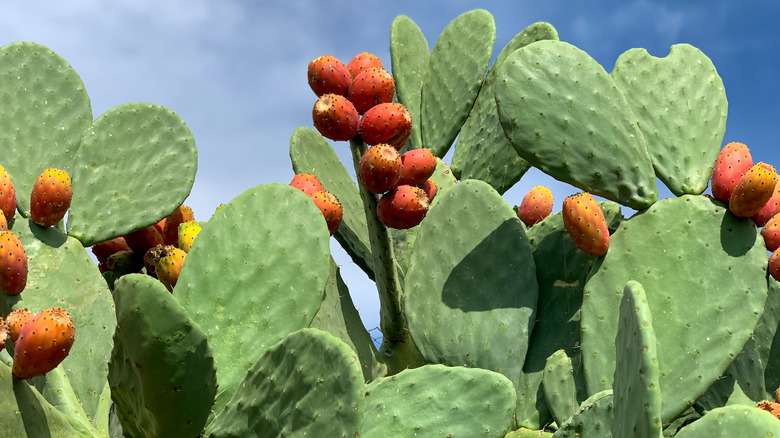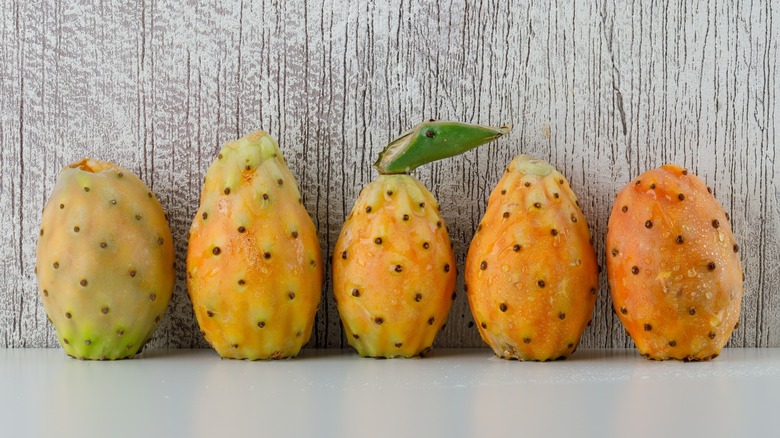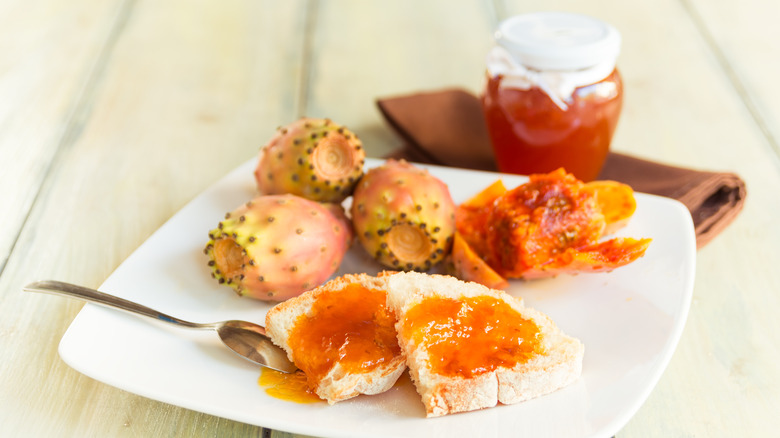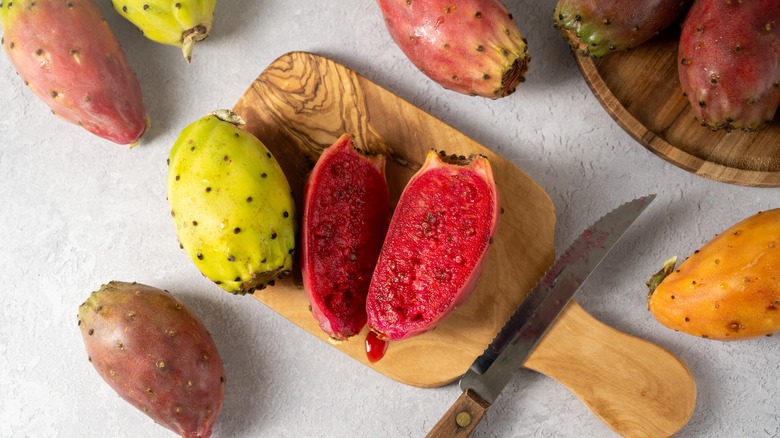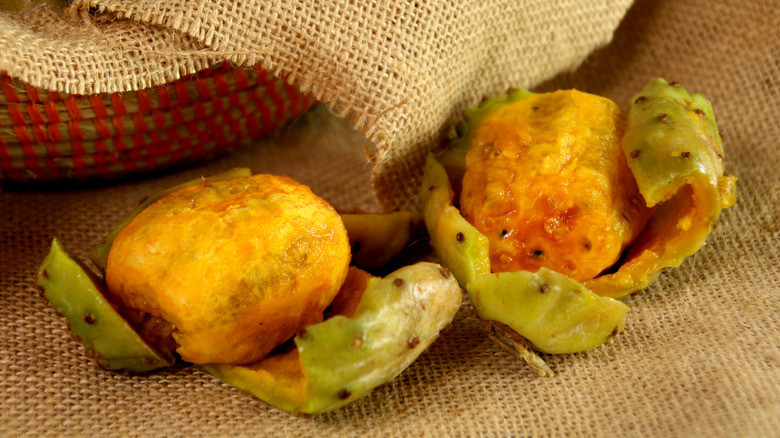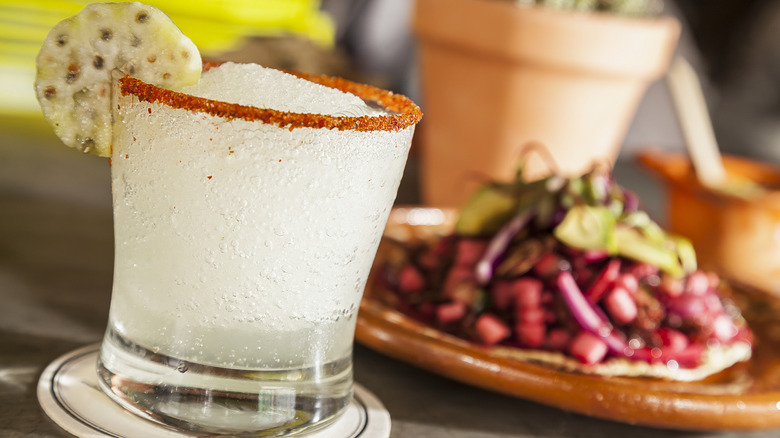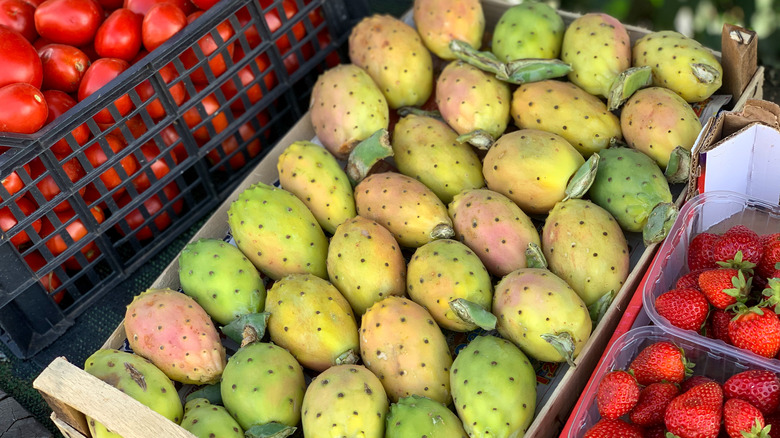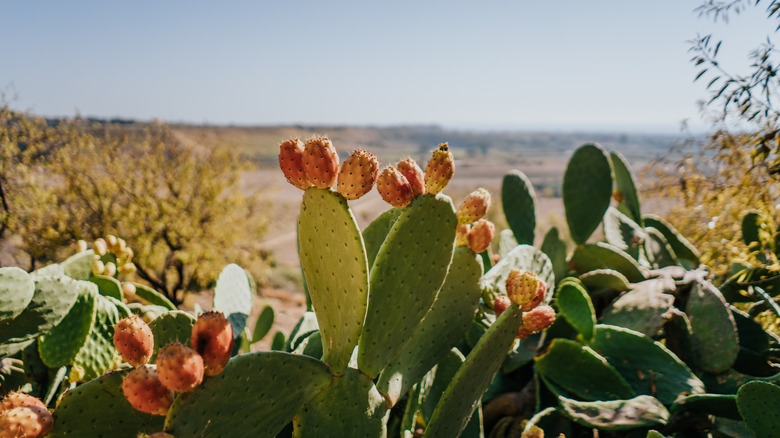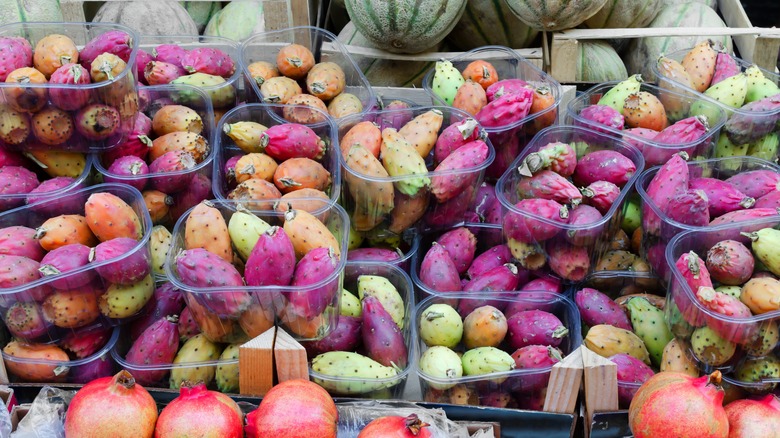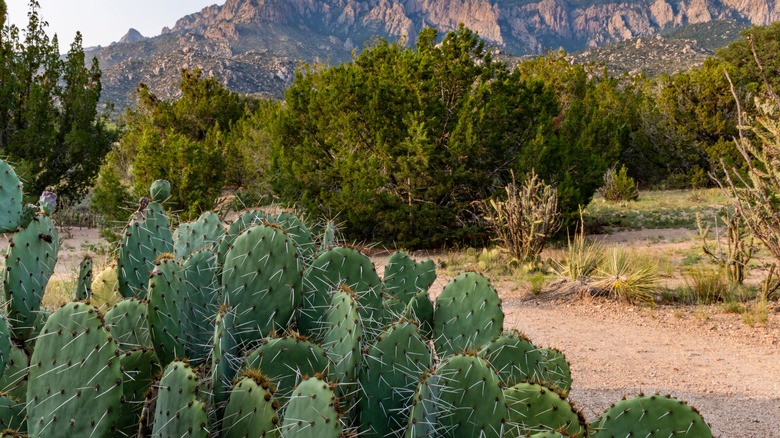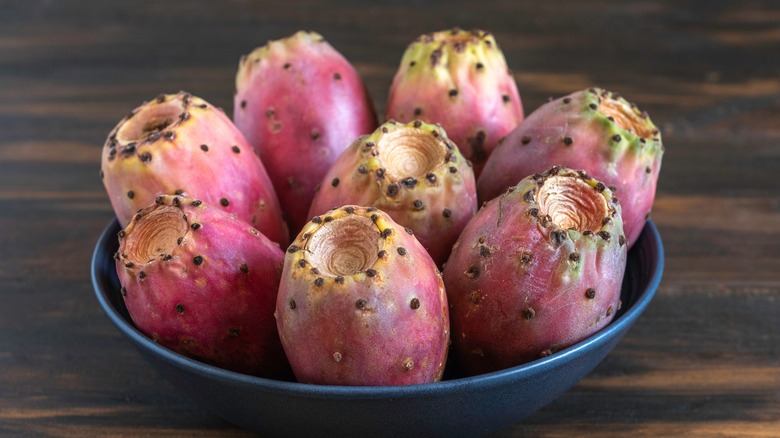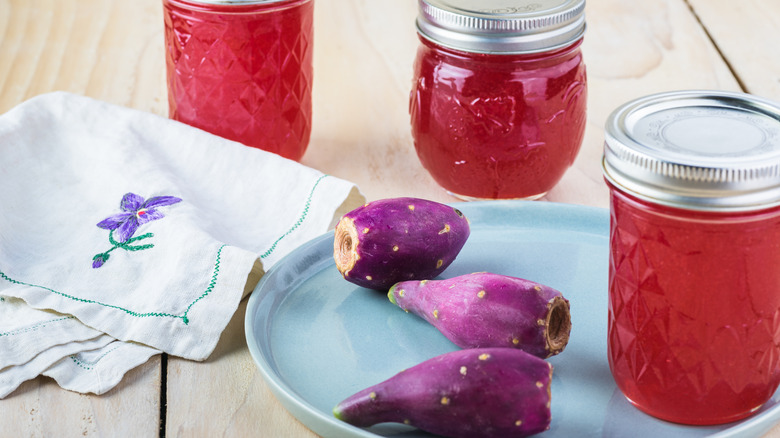What Is Prickly Pear And What Does It Taste Like?
The prickly pear is a curious specimen in the world of fruit, intriguing both in appearance and taste. Cultivated from the Opuntia genus of cacti, this peculiar fruit is as fascinating as it is flavorful. It's a vibrant, pear-shaped fruit that's all dressed up in thorny armor that demands cautious handling. But beneath its prickly exterior lies a flesh so tender and succulent that it has become a culinary delight in various parts of the world.
So, what exactly is a prickly pear, and what does it taste like? If you've ever been curious about prickly pears, you've come to the right place. Perhaps you've seen them growing abundantly in areas of the U.S. or seen them on vacation in Mexico or Sardinia. Maybe you've just heard about them and want to know more.
Well, we're about to give you the lowdown on prickly pears. We'll cover everything from what exactly they are and what they taste like, to how to juice them and cook with them. If there's anything you've ever wanted to know about prickly pears, your questions are about to be answered. So, the next time you encounter this fruit, don't be deterred by its prickly demeanor. With careful handling and an adventurous spirit, you'll uncover a world of flavors waiting to be savored.
What is a prickly pear?
A prickly pear is a fruit that grows on various species of Opuntia cacti, native to the Americas. These cacti are incredibly resilient, thriving in arid and semi-arid regions. They are characterized by flat, oval, or pear-shaped pads, often referred to as nopales, which are modified branches or stems. These pads are equipped with clusters of glochids — tiny hair-like spines — and larger, more noticeable spines that serve as their natural defense mechanisms.
The fruit of this cactus family is known as the prickly pear because it's roughly pear-shaped and covered in spines. Despite its thorny exterior, it hides a sweet, succulent interior. The plant's pads are also edible. Prickly pears come in different colors, such as red, yellow, and green, depending on the variety. They're tricky to handle — you need to use tongs or gloves to avoid getting pricked by the numerous small spines. Once peeled, the fruit reveals a soft, juicy flesh filled with tiny, edible seeds.
So, if you're curious about trying something new and tasty, a prickly pear might be just what you're looking for. Remember to handle it with care, and you'll discover a surprisingly delightful fruit beneath those prickly spines.
What do prickly pears taste like?
Prickly pears might look menacing, but they taste great. It can, however, be tricky to explain exactly what they taste like. Prickly pears taste like, well, prickly pears. So, if you want to know their precise flavor, you'll need to try one. However, we can give you a rough idea of the kind of flavor to expect from these cactus fruits.
If you're expecting them to taste like pears, think again. The name comes from the fact the fruits are pear-shaped, not anything to do with the flavor. Prickly pears are very sweet, and that might be the first thing you notice. The flavor isn't especially intense, it's more pleasantly mild and refreshing. Some people liken the taste of prickly pear to melon or kiwi. Others say it's a little like under-ripe strawberry, with a hint of tartness underpinning the sweetness, which adds a pleasant contrast. If you're curious, the best thing to do is to try a prickly pear — you might end up loving it.
What part of the prickly pear is edible?
The outer layer of the prickly pear fruit is covered in thorns and spines. This might seem formidable, but once carefully handled, it reveals the treasure within. The edible part of the prickly pear is the inner flesh of the fruit, enclosed by the tough, spiky skin. To access this delectable interior, you'll need to peel away the outer layer, discarding the skin and ensuring that no spines are left behind. Once peeled, you'll find the soft, juicy flesh, containing both the natural sweetness and subtle tartness that makes prickly pears so intriguing. Once you get inside, the flesh is filled with tiny seeds. These seeds are edible and way too numerous to try removing. Its texture is smooth and succulent, and the seeds provide a gentle crunch.
In addition to the fruit, the pads, known as nopales, are another edible part of the prickly pear cactus. These flat, oval segments are cooked after removing the spines and thorns. Once prepared, nopales offer a slightly tangy flavor and a crisp texture, making them versatile in the kitchen. These are generally used in savory dishes, particularly in Mexican and other Central American cuisines.
How to cut and peel prickly pears
First off, you need your prickly pear to be free from thorns. If you buy it from a market, this will already be done for you. But if you pick prickly pears, you'll need to do the tough part yourself. You'll need to use thick leather gloves or tongs to handle the fruit until it's free from spines. There are a few methods for removing the thorns, including burning them off, using a knife, shaking them in a strainer under running water, and even using tweezers for stubborn thorns.
Once that's done, you're ready to cut and peel your prickly pears. To do this, start by cutting a small amount off each end. Then, cut it lengthways from one end to the other. You should now be able to grab the skin and start to lift it off the fruit. Continue peeling it off the fruit. You're then left with the whole edible inside. You can cut or slice this however you choose.
How to get juice from prickly pears
Not only is prickly pear juice sweet and delicious, but it's useful for other food and drink purposes. You can use it to make prickly pear candies and jellies, or you can use it in a range of cocktails. Even simply mixing it with soda water or lemonade makes a delicious, refreshing non-alcoholic drink.
But how do you get juice from a prickly pear? Well, it's fairly simple — all you'll need is a blender and a strainer. You start with your prepared and peeled prickly pears. Chop them roughly, although how small you need to go depends on your blender. If it's a high-powered blender, there's no point in wasting time chopping them at all.
Put them in your blender and pulse them until they're liquified. They won't be completely smooth because of the seeds in the fruit. Next, tip the liquified prickly pears into a fine mesh strainer over a jug or a bowl. Use a spoon or spatula to push as much of the juice through the strainer as possible. Any pulp that won't go through the strainer and any seeds can be discarded. Expect to get around 1 cup of juice from 6 to 12 prickly pears.
Where to buy prickly pears
Now you know more about prickly pears, you might be wondering where to buy them. Unfortunately, they're not as easy to find as basic fruits like apples and bananas, but the payoff is worth it once you find a source. Bear in mind that it's easier to find prickly pears in areas where they grow abundantly, such as Arizona and New Mexico. However, you can find them in areas outside their native range, such as Oregon. They may be more commonly found when they're in season from mid-summer to fall, but you should find imported fruits year-round.
First off, check your local supermarket. Many well-stocked grocery stores carry prickly pear fruits — especially those with a good produce section, such as Sprouts Farmers Market. Look for them in the fresh fruits aisle, often near other exotic or specialty fruits.
Local farmers' markets are excellent places to find fresh and seasonal produce, including prickly pears. Farmers' markets usually offer a variety of fruits, and you can often buy directly from local farmers, ensuring freshness. You should also try looking for them in Mexican mercados. Prickly pears are common in Mexican cuisine, so stores specializing in Mexican foods often carry them. You may also find them in grocery stores that specialize in other Latin American cuisine.
Can you forage for prickly pears?
Foraging for prickly pear fruits is indeed a possibility, but the clue's in the name — these cactuses are prickly. So, if you want to forage, you'll need to be prepared. Luckily, there are plenty of U.S. regions where you'll find no shortage of prickly pears, such as the Western U.S. where you'll find the plains prickly pear cactus. If you're keen on foraging, here's what you need to know.
First, you'll need to identify the cactus. Prickly pear cacti have flat, paddle-shaped pads covered in spines. During the flowering season, these cacti produce colorful, pear-shaped fruits. It's crucial to correctly identify the plant and ensure it's legal and ethical to forage in the area you're exploring. Next, choose the right time to forage. Prickly pear fruits are usually ripe and ready for harvest in late summer to early fall. Given the spines on the cactus, wearing thick gloves, and using long-handled tongs or pliers is essential to protect your hands while foraging. Carefully handle the fruits to avoid getting pricked.
Use tongs or pliers to grasp the fruit and twist it gently until it detaches from the pad. Be cautious not to damage the pad or the surrounding cactus. Place the harvested fruits in a sturdy container. Foraging for prickly pear fruits can be a rewarding experience, providing you with fresh, natural produce. However, always respect the environment, follow local regulations, and ensure your safety by wearing appropriate gear.
What to look for when buying prickly pears
When you're buying prickly pear fruits, there are several key things to look for to ensure you're getting the best ones. Choose prickly pears that have vibrant, rich colors. Depending on the variety, they can be deep red, purple, yellow, or green. However, this can be a little confusing, because you should avoid green fruits unless they're supposed to be green when ripe.
It's also a good idea to gauge the firmness. Gently squeeze the fruit — assuming it's had the spines removed. A ripe prickly pear should feel yield slightly, indicating it's soft and ready to eat. However, if it's too mushy, it might be overripe and have a fermented taste. Choose prickly pears that feel heavy for their size. Heavier fruits typically indicate juiciness and a higher water content, which contributes to their succulence. Avoid fruits with visible blemishes, bruises, or soft spots. Prickly pears have thick skin, but any signs of damage could mean the fruit inside is compromised.
Types of prickly pears
There are more than 200 species of prickly pear cactus in the genus Opuntia alone. Of these, you'll find roughly 40 in the United States. So, it's likely that you'll come across a range of varieties, whether in stores or out in the wild. These are some of the most common types of prickly pear in the U.S.
Engelmann prickly pear is native to the southwestern United States and northern Mexico. It's characterized by its flat, oval pads and vibrant yellow flowers. The fruits tend to be red or purple when ripe. Opuntia ficus-indica is also known as the Indian fig or Barbary fig. While it's native to Mexico, it's widely cultivated in the U.S., especially in states like California and Arizona. It has large, rounded pads and produces large, sweet fruits. Indian fig prickly pears can be green, yellow, or purple, depending on the variety.
The tulip prickly pear is found in the southwestern U.S., including Arizona, New Mexico, and parts of California. It has elongated pads that resemble tulip flowers. The fruits are small, red, and spiny. The plains prickly pear is found in central and western parts of the U.S., including the Great Plains. This species has small, flat pads and produces yellow to red fruits. Plains prickly pears are cold-resistant and can withstand harsh climates.
How to store prickly pears
Storing prickly pear fruits properly makes sure they're fresh and tasty when you're ready to eat them. If your prickly pears still need to ripen, you should leave them on the counter at room temperature where they should be ready to eat in a few days. But ideally, they should already be ripe. In which case, store them in the refrigerator. Put them in the produce drawer, as this often has humidity control, keeping produce fresh for longer. Depending on how ripe they are when you get them home, expect them to stay fresh for a week or two.
To keep prickly pears for a more extended period, consider freezing them. Some people freeze whole prickly pears with the spines removed but the skins are still on. But it's also fine to freeze prepared prickly pear. First, peel the fruits and cut the flesh into cubes or slices. Lay them in a single layer on a tray and freeze until firm. Transfer the frozen pieces to an airtight container or freezer bag.
Whether in the fridge or freezer, you should avoid stacking prickly pears on top of each other. This prevents them from getting squashed, which can lead to bruising and spoilage. Even in the refrigerator, prickly pears have a limited shelf life. Regularly check stored fruits for any signs of spoilage, such as mold, off smells, or unusual textures. Discard any fruit that shows these signs.
Can you preserve prickly pears?
Yes, you absolutely can preserve prickly pear in a range of forms. This extends its usability and lets you enjoy it beyond its natural season. There are several preservation methods you can choose from, so consider what you want from your prickly pear. Preserving prickly pears as jam lets you enjoy their sweet flavor on toast, pastries, or as a condiment. On a similar note, there's also prickly pear jelly to consider. Jelly offers a smooth, spreadable texture and is a delightful addition to various dishes, making it a popular choice for preserving prickly pears. Or you could try making prickly pear syrup. It's a versatile option, perfect for drizzling over pancakes, waffles, or desserts — and it can also be used in cocktails and beverages.
Fresh prickly pear juice can be preserved through canning or freezing, allowing you to enjoy its refreshing taste even when the fruit is out of season. You could also ferment that juice and turn it into wine. Prickly pear candy involves simmering the fruit with sugar until it forms a chewy, flavorful treat that captures the essence of the fruit. Alternatively, fruit leather is a good option that isn't as intensely sweet. Canning prickly pear fruits or preserves in jars with proper sterilization ensures a longer shelf life, allowing you to enjoy the taste of prickly pear throughout the year.
